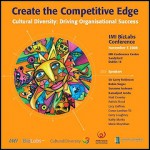In our article “Diversity management: A new organizational paradigm” my coauthors and I stress the need for involvement of top brass in instigating, continuing, and ensuring positive change. We hypothesize the leaders impact human resource transformation, individual level outcomes (e.g., integration, organizational attachment) which in turn influence public recognition.
Leadership can also produce negative results, depending on what’s modeled for lower ranking remployees. Two examples are Shoney’s and Denny’s. As reported in The Wall Street Journal, employees say Ramon Danner “shook up the staffs at his Shoney’s Inc. restaurants under the theory that some of them were ‘too dark.’ Employees say he sometimes ordered managers to fire blacks if they were deemed too visible to white customers” (Gaiter, 1996).
Denny’s was pelted with bad publicity after six black Secret Service agents waited nearly an hour before a server appeared at their table. Subsequent leadership (in the form of CEO Jim Anderson) told his management staff that he was “going to do everything possible to provide better jobs for women and minorities. And I will fire you if you discriminate.” There was a similar about face at Shoney’s with regard to diversity support and inclusion.
Your visibility as leader carries a whollop on your workforce. What you model, according to social learning theory, is what you will later see. Your treatment of subordinates, customers, and third party vendors cascades throughout the organization and sends ripple effects in terms of what’s tolerated. If you’re a leader, consider the following:
- When bad behavior occurs, do you nip it in the bud? Not after the meeting, not in a yearly performance review, but right then. Doing so will send an unmistakable message to onlookers.
- How do you interact with other people? Do they walk on eggshells in your presence, or avoid your office (because you’re moody and authoritarian)?
- Do you encourage interaction through informal gatherings and water cooler banter? Do employees feel they are part of a larger, caring community, or does everybody shut their does and go home?
- Are cultural norms in place, ala Southwest Airlines which espouses a philosophy of “luv” (where colleagues are expected to support one another, affirm one another, and speak highly of their cohorts)?
- Is there a diversity of people in key positions, or are power posts held only by a privileged group? Are decisions in essence unilateral?
If you’re a leader, you’re under a microscope. What you think is “not a big deal” may have serious repercussions for someone else. Like a butterfly whose wing flap effects parts unknown, your actions carry tremendous weight in ways you had not imagined.
References





Recent Comments